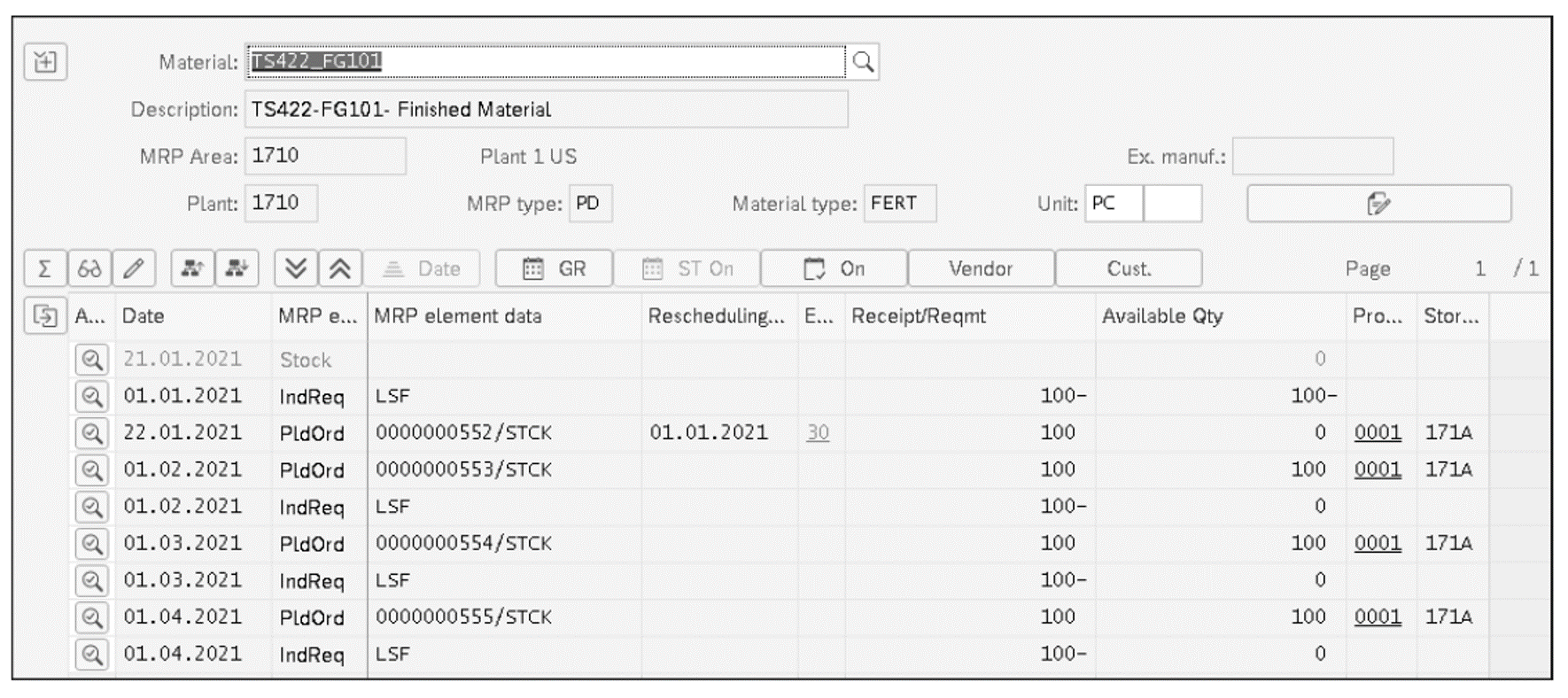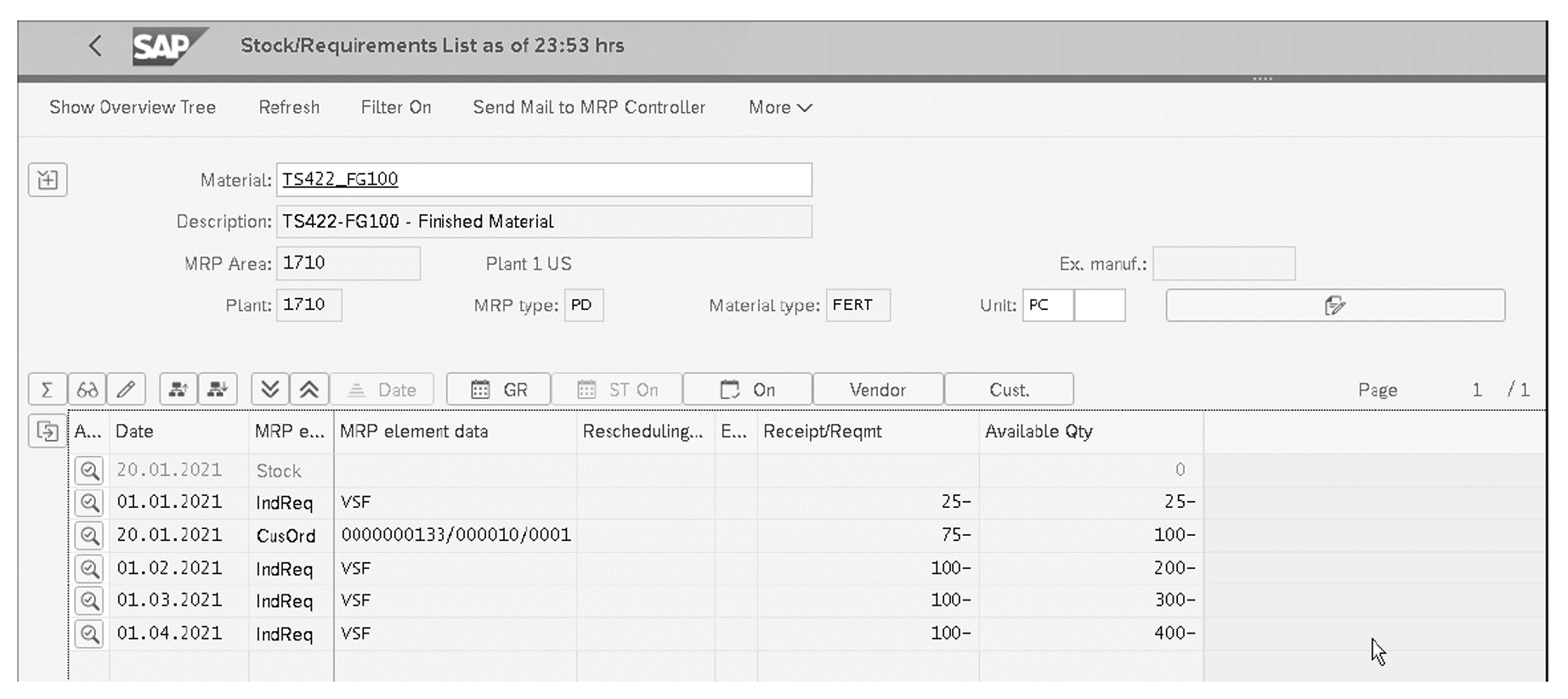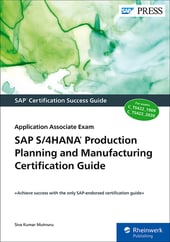The main aim of the make-to-stock (MTS) environment is to provide superior customer service and make the product available as and when the customer wants it.
In anticipation of customer orders, the stock will be produced in advance; then, as and when sales orders arrive, these orders are fulfilled from the warehouse stock. It’s important to have a demand plan for these kind of products to reduce inventory-carrying costs.
In this blog post, we’ll discuss some of the important MTS planning strategies you can use in SAP S/4HANA: net requirements planning (planning strategy 10), gross requirements planning (planning strategy 11), planning with final assembly (planning strategy 40), and production by lot size (planning strategy 30).
Net Requirements Planning (Planning Strategy 10)
With this strategy, only PIRs influence production or procurement, which means the main aim of following the demand plan will be achieved, and sales orders won’t influence or impact the overall demand plan. Sales orders will be displayed in the stock/requirements list, but they won’t be part of net requirements calculation in MRP. Because the sales orders aren’t relevant for MRP, the consumption of PIRs won’t take place in this strategy. The oldest PIRs will be reduced by goods issue for the sales order delivery. This planning strategy is useful in mass production environments and is often combined with repetitive manufacturing.
This strategy is useful for products with seasonal demand where production needs to be smoothed. It uses the following requirement types:
- For independent requirements: LSF
- For customer requirements: KSL
As shown in the figure below, for net requirements planning, the MRP element IndReq has LSF as its requirements type. Even though there is a customer order, it’s only for informational purpose.

A warning on this strategy: the oldest PIRs are reduced first, and consumption mode isn’t relevant. However, if the sale from stock exceeds the total PIR quantity in the past because of unplanned sales orders, then PIRs in the future are reduced if a corresponding entry is maintained in the consumption period.
Gross Requirements Planning (Planning Strategy 11)
For this strategy, there are many similarities with planning strategy 10 (net requirements planning). The main difference is that on-hand stock isn’t considered during MRP, which means only planned quantities are produced. This strategy is mainly used where it’s not possible to stop production even though the stock is available. This strategy is useful in cement, steel, or pig iron-making industries, where continuous production occurs, and shutdown of production isn’t an option to optimize planning.
One additional master data parameter to be maintained for this planning strategy is setting the Mixed MRP field to 2 (gross requirements planning) in the MRP 3 view. As in planning strategy 10, sales orders also won’t have any influence on planning for this strategy, so there’s no consumption of PIRs. Reduction of PIRs takes place during goods issue for production orders, planned orders (repetitive manufacturing), or purchase orders (trading goods). As shown below, there is a special segment in the stock/requirements list, Gross Requirements Planning, for all the relevant PIRs and procurement elements.
This strategy uses the following requirement types:
- For independent requirements: BSF
- For customer requirements: KSL
As you see in the next figure, for gross requirements planning, the MRP element IndReq has BSF as its requirements type. Even though a stock of 300 PC is available, the system planned for an additional 300 PC to fulfill PIRs.

Planning with Final Assembly (Planning Strategy 40)
Planning strategy 40 is the most widely used planning strategy. This strategy combines the features of both MTS and make-to-order strategies, where sales orders will have influence on planning. In this strategy, MRP will generate planned orders to cover the PIRs if existing stock or planned receipts don’t cover the PIRs. MRP will also consider sales orders if they exceed the PIR quantity, meaning the maximum from sales orders or PIRs will always be planning relevant.
Incoming sales orders consume PIRs so that the planning situation is always adjusted to suit the current requirements and to avoid duplicate manufacturing. This consumption of PIRs is based on the parameters either maintained in the material master or from the parameters maintained in the customization of the MRP group. With this strategy, it’s possible to react quickly to customer requirements.
In the figure below, the PIRs were maintained at 100 PC each on a monthly bucket from January to April. The incoming sales order consumed the PIR quantity, and the remaining PIR for the month of January is only 25 PC.

This strategy uses the following requirement types:
- For independent requirements: VSK (planning with final assembly)
- For customer requirements: KSV (sales order with consumption)
It’s not required to have Availability check selected in the material master field in the MRP 3 view while using this strategy, as this field won’t impact the planning process of strategy 40.
Production by Lot Size (Planning Strategy 30)
Planning by lot size is only based on sales orders or sales scheduling agreements. Several sales orders can be grouped together for production collectively in a single lot. This can be achieved by lot size optimization or the rounding mechanism. As the production is purely based on sales orders, it will be challenging to anticipate the production volumes and the component requirements. Therefore, procurement of components can be performed by using planning strategy 70 (kanban components or consumption-based components). In some situations, or during production optimization, it’s better to produce to a lot size, for example, for foundry operations or steel melting, where it’s always economical to produce to full furnace capacity. This planning strategy is used where the production is for major customers, and the leftover stock will be sold in smaller quantities.
With this strategy, there is no need for PIRs because sales orders or schedule lines will be consumed by the deliveries. If any goods issue is made against a specific sales order, then the sales order quantity will be reduced by the system.
This strategy uses the following requirement types:
- For independent requirements: LSF (MTS production)
- For customer requirements: KL (sales order manufactured by lot size)
Learn PP in Our Rheinwerk Course!
With a look at both business processes and system configuration, this course has end-to-end coverage of PP! Understand the data, functionalities, and settings that support your production planning workflows in SAP S/4HANA. Dive into demand management, MRP, capacity requirements planning, shop floor control, and reporting. Examine manufacturing by industry, and look ahead to new innovations in SAP S/4HANA! Get access to course recordings by clicking the banner below.
Editor’s note: This post has been adapted from a section of the book SAP S/4HANA Production Planning and Manufacturing Certification Guide: Application Associate Exam by Siva Kumar Mutnuru.




Comments